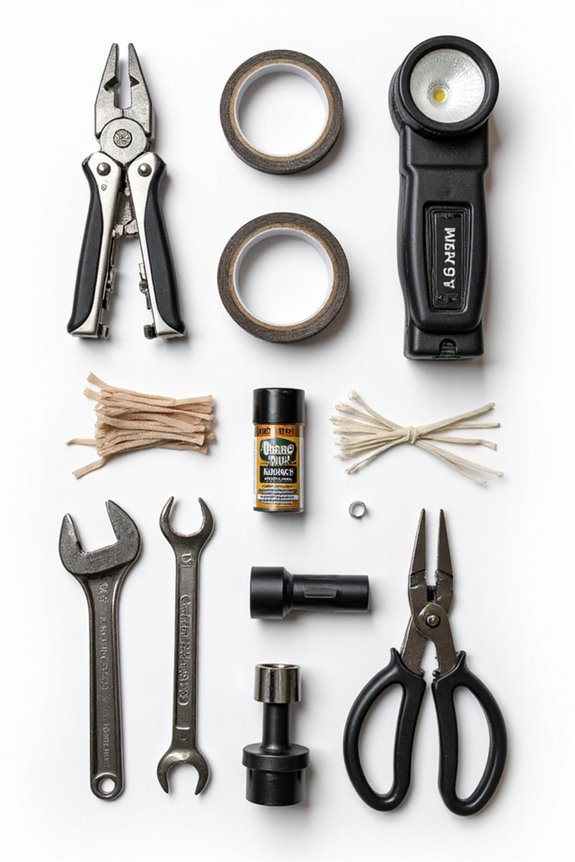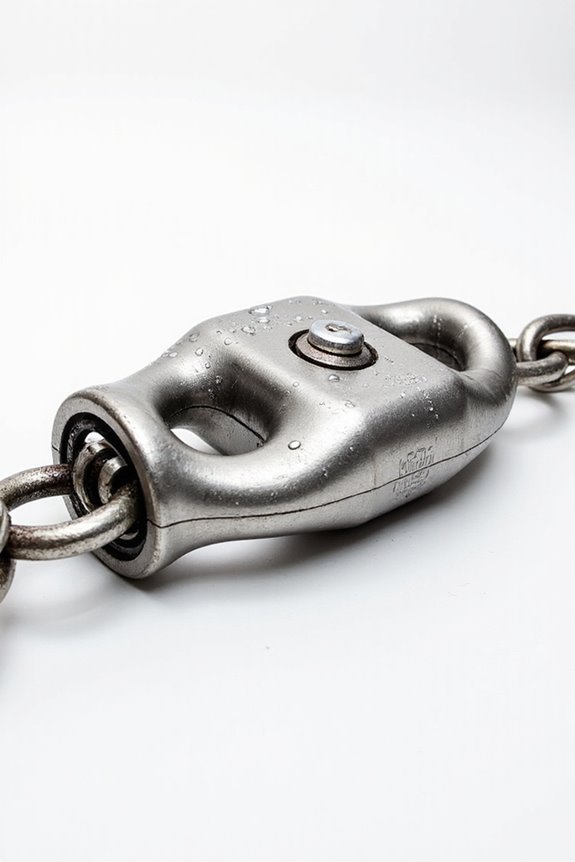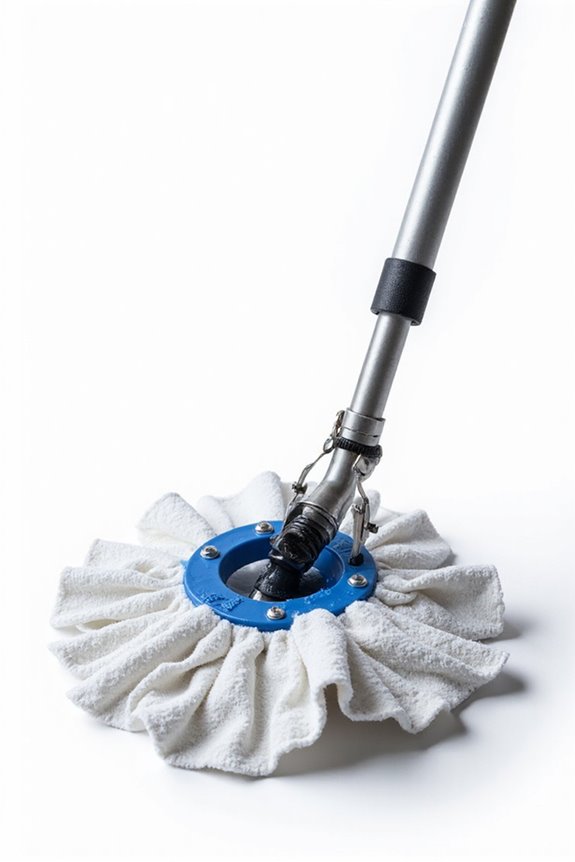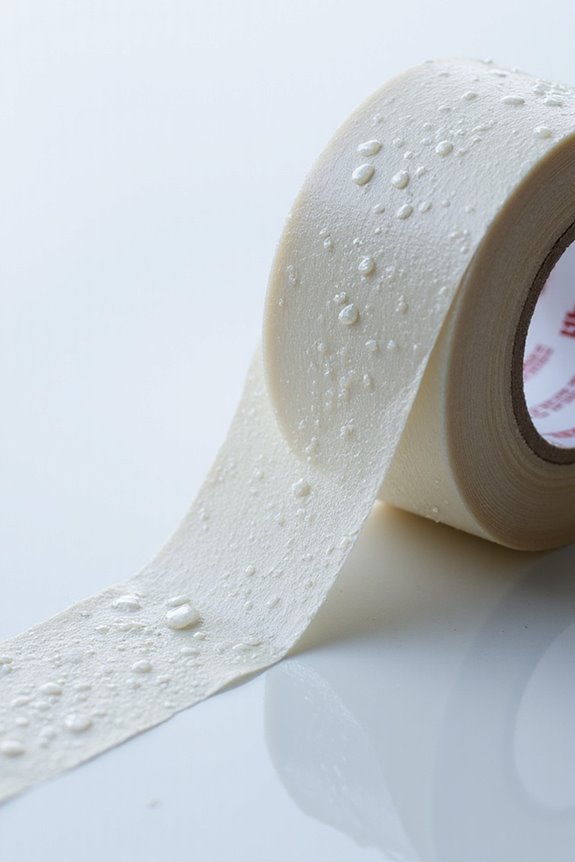When stocking your boat tool kit, think versatile hand tools like a trusty multi-tool, plus screwdrivers, pliers, and a rigging knife for those sail tweaks. Don’t forget safety gear—life jackets, fire extinguishers, and throwable flotation devices—and quick-fix supplies like duct tape, hose clamps, and epoxy for emergencies. Toss in specialty tools like a torque wrench for engine care, plus spares like fuses and spark plugs. Want to know how to stay fully ready and relax more on the water?
Key Takeaways
- Include reliable multi-tools with flat and Phillips screwdrivers plus pliers for versatile quick repairs onboard.
- Carry essential hand tools like screwdrivers, pliers, and socket sets organized in a sturdy case.
- Pack stainless steel hose clamps, duct tape, electrical tape, and epoxy kits for temporary fastening and hull repairs.
- Bring specialty marine tools such as a rigging knife, torque wrench, and strap wrench for sail and engine maintenance.
- Always have extra batteries, a headlamp with red light, and spare parts like fuses and spark plugs for emergencies.
Essential Hand Tools for Every Boater
When it comes to boating, having a solid set of essential hand tools can make all the difference between a quick fix and a day wasted stranded. We all know that a reliable multi tool is a boater’s best friend — its many features, like flat and Philips head screwdrivers plus pliers, let us tackle various issues without lugging a toolbox. Speaking of screwdrivers, having the right screwdriver types aboard is crucial: flat-head for standard screws, and Phillips for those cross-shaped ones. What’s neat about multi tool benefits is how they combine these essentials compactly, perfect for tight spaces and quick repairs. So, ready to fix that loose cleat or adjust equipment without hunting down tools? That’s the confidence essential hand tools bring us on every trip.
Safety and Emergency Equipment to Have Onboard
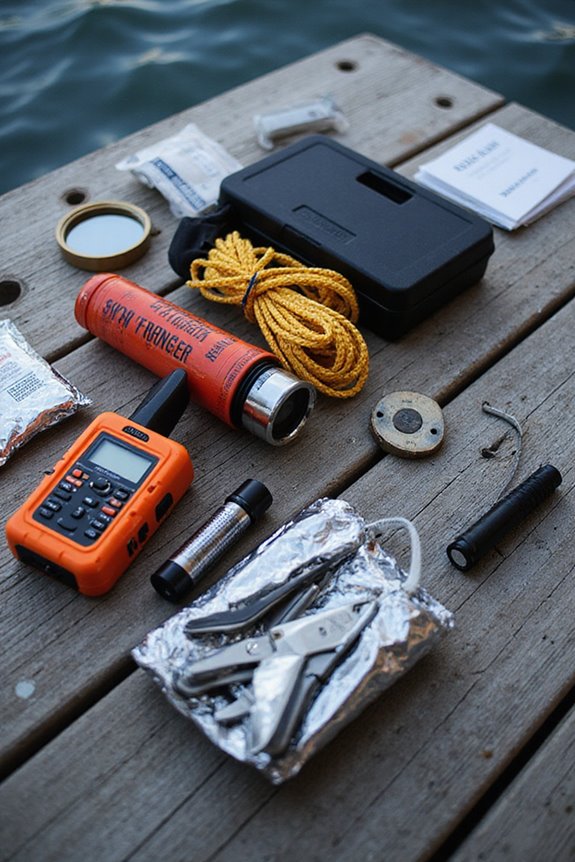
A solid safety and emergency setup isn’t just a “nice to have” — it’s the backbone of any boating adventure, and honestly, it can make all the difference if things take an unexpected turn. We all want to enjoy the water without worry, so let’s talk about must-haves that meet safety regulations, like wearable life jackets for every person, fire extinguishers suitable for your boat’s size, plus throwable flotation devices for longer vessels. Emergency preparedness means having visual distress signals, sound-producing devices, and a reliable VHF radio or waterproof cellphone for communication—because yes, even in the middle of nowhere, staying connected counts. Don’t forget a solid first aid kit tucked away in waterproof storage. When safety feels like a team effort, we’re all better off, don’t you think? Additionally, ensure that each life jacket is US Coast Guard approved to guarantee compliance with safety standards.
Fastening and Repair Materials for Quick Fixes
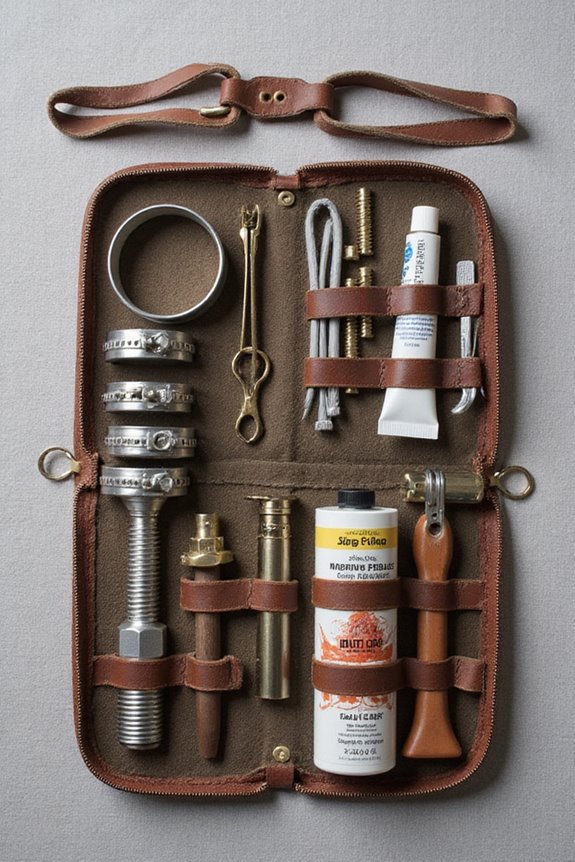
Even if we’re usually all about enjoying smooth sailing, it’s smart to be ready for those not-so-smooth moments with quick fixes on board. When it comes to fastening techniques, stainless steel hose clamps and sturdy plastic tie-wraps—aka zip ties—are lifesavers for temporary holds or emergency plumbing repairs. Got wiring issues? Electrical tape, heat shrink tubing, and connectors help keep systems running smoothly without fuss. Our go-to repair strategies often include epoxies and fiberglass kits for hull nicks, plus duct tape for those “just in case” moments. And don’t forget mineral spirits to prep surfaces like a pro before patching. With these tools and materials, we tackle mishaps confidently—after all, isn’t it better to fix it fast than wait for smoother seas? Additionally, keeping an eye on your marine battery temperature is crucial to prevent overheating during repairs.
Specialty Tools for Specific Marine Tasks
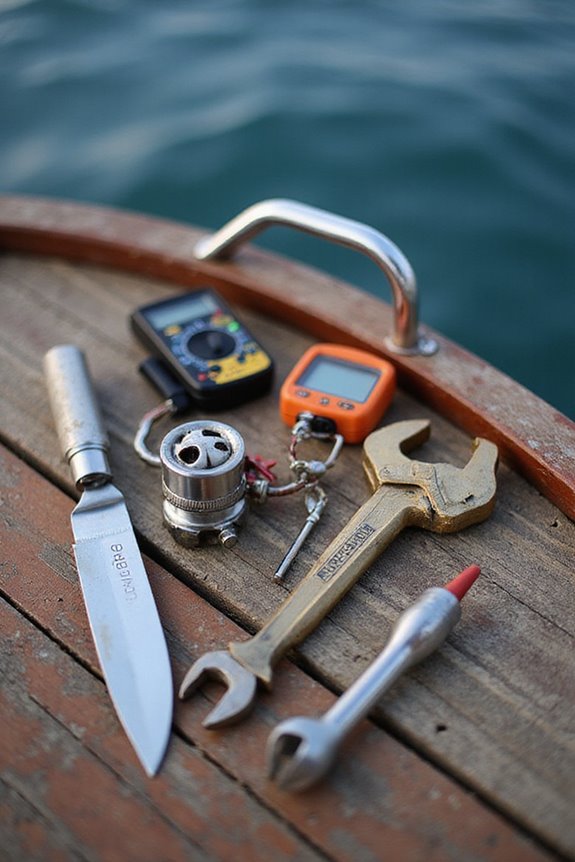
Since every boat task calls for different tools, having the right specialty gear can make all the difference between a quick fix and a frustrating struggle. When it comes to rigging tools, a rigging knife with a built-in marline spike and sailing hooks can save the day by helping us adjust sails or untangle stubborn knots quickly—because who likes fighting lines in rough seas? And what about engine tools? A torque wrench is a must to avoid over-tightening bolts, while a strap wrench and ratchet set make engine maintenance less of a chore. Having these specialized tools on board means we’re ready to tackle specific marine tasks confidently, making our time on the water more enjoyable—and less “tool time” stressful. Who’s with me on that?
Miscellaneous Essentials to Complete Your Kit
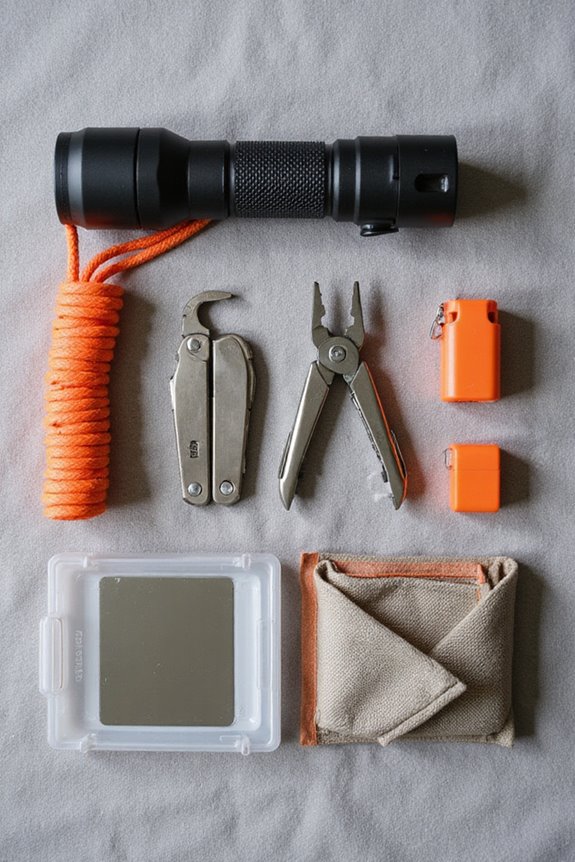
When specialty tools cover the big jobs, it’s the miscellaneous essentials that often save our skins during unexpected moments. Ever had to find a dropped bolt or fix a loose screw in dim light? A headlamp with red light mode, plus extra batteries, becomes your best mate. Adding duct tape, zip ties, and a multi-tool means you’re ready for quick fixes, while wooden plugs and a telescoping mirror help with those tricky repairs. Following smart boat maintenance tips means keeping pliers, screwdrivers, and a socket set neatly organized in a sturdy tool case—tool organization strategies that we swear by. So, before your next trip, double-check your kit: these little extras could be what turns a potential headache into a smooth sailing day. Ready to get your hands on these essentials?
Electrical and Signaling Devices for Emergencies
Although we hope never to need them, having reliable electrical and signaling devices on board is a must for any boater who takes safety seriously. Battery safety should be top of mind—keeping battery packs secure and guaranteeing backup power sources, like solar panels or spare batteries, can make all the difference when power’s out. When it comes to signaling techniques, knowing when and how to use aerial flares, LED distress lights, or even distress flags can save precious time. Ever wonder how to signal an SOS at night without setting the sky on fire? LED and electronic flares offer safe, reusable options. Plus, having a VHF radio or a Personal Locator Beacon guarantees help is just a call away. Having a floating VHF radio on board not only enhances safety but also ensures reliable communication during emergencies. Let’s keep our gear ready and up to code—it’s what good boating mates do.
Spare Parts and Maintenance Aids for Reliability
Even the best-prepped boaters can’t predict every hiccup that might pop up on the water, so having spare parts and maintenance aids on board is a smart move. We always keep spare fuses handy—when a sudden electrical glitch hits, replacing a fuse can save your day without needing a tow. For engine maintenance, bringing along spare spark plugs and an impeller is a lifesaver, ensuring your motor runs smoothly. Don’t forget hose clamps and zip ties for quick fixes on plumbing or fuel lines—they’re surprisingly versatile. And sure, duct tape and penetrating lubricant might sound basic, but trust us, they’re the MVPs of emergency repairs. Together, these items keep us confident, no matter what the waves throw at us. Ready to tackle your next trip?
Frequently Asked Questions
How Often Should I Inspect and Replace My Boat Tool Kit Items?
We should follow a regular inspection frequency: basic checks before each outing, detailed every 20 hours, and thorough every 50 hours. Replacement guidelines mean swapping damaged or expired items promptly to keep our boat tool kit reliable and safe.
What Is the Best Way to Organize Tools to Save Space on a Boat?
We believe tool storage works best with compact organization—using stackable containers, custom foam inserts, and wall-mounted pegboards. Together, these methods keep our tools secure, accessible, and out of the way, strengthening our shared boating experience.
Can I Substitute Power Tools for Hand Tools in My Kit?
We’d say power tools can be a bit high-maintenance and tricky onboard, while hand tool benefits like reliability, versatility, and safety truly shine. So, sticking with hand tools keeps our boat kit practical and our crew united.
How Do Weather Conditions Affect the Storage of My Tool Kit?
It is understood that temperature fluctuations and humidity impacts can damage our tools if we’re not careful. Together, we’ll protect our kits by using airtight containers, desiccants, and avoiding direct sun exposure to keep everything in top shape.
Are There Any Regulations for Carrying Tools on Different Waterways?
Isn’t it ironic that despite all the chatter about regulatory requirements, there are hardly any rules about carrying tools on waterways? Still, we recognize keeping our gear ready boosts waterway safety—and that’s what truly connects us out there.

